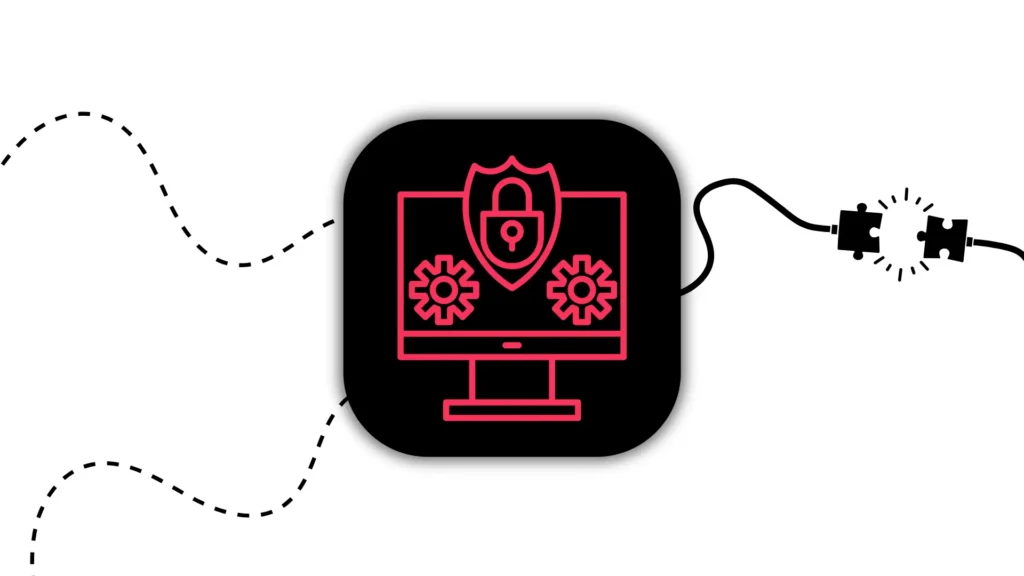Ask people if they like it.
Right there – the foundation of modern-day commerce. The very reason why disruptive technologies are changing the business climate at lightning speed. Never mind the impression, but next-level automation, cool AI make-do, or omnichannel coherence don’t stand at the source of these changes. A wish to appeal to customers is.
Therefore, we wondered – after years of working with retail and hybrid commerce businesses – how is retail automation helping to make everyone’s experience better? Yes, everyone’s – that of customers, partners, employees, and other stakeholders. More importantly, what can struggling commerces do to keep pace with forerunning commerce behemoths? Well, read on as we bring you 4 ways to emulate proven practices in business-vital areas.
Going Online The Right Way
Automation is slowly picking up in the world. The reason is that we are now starting to understand that even offline facets of the business need to turn the status button to green. In other words, we need to enrich multiple business segments with data.
In fact, data and analytics have emerged as paramount elements in digital transformation. A few years back, Gartner anticipated that by 2023, a notable 90% of corporate strategies will underscore the data as a pivotal business asset. It’s 2023 and today the estimation rings as spot-on. Ming Zeng, Alibaba’s Chief Strategy Officer, even goes on to say “To digitally transform, you have to move your business online first. This pushes coordination among businesses to become more network-driven, rather than the traditional way of vertical supply chain.”Hence, an immediate discussion on integrating data into offline segments and transitioning from legacy systems – if not already underway – is imperative. As well as turning from blindfolded retail or multi-channel commerce to interconnected, omni-channel venture.
#1 Start From The First Encounter: Usability

Consumers hate bad UX and despise lousy retail buying experiences. A flying pop-up here, a needless button there, a slow and nervous cashier over there… These mistakes are a formula for turning disengaged consumers into use-to-be buyers. In fact, as much as 88% of consumers are less likely to return to a site upon struggling to finish their order. Which, again, proves the point.
Improving usability is the simplest and most rewarding automation move you can make.
Additionally, enhancing usability provides an immediate sense of achievement. The consumers find it easier to buy more, they come again, refer others, and the profits quickly skyrocket as a result. This, in turn, also helps to better understand automation and initiate transformative measures across the business as a whole. Because, hey, why not… the results are obvious.
So, the goal here would be to focus on improving the interaction with your business at each touchpoint; from the moment of ordering or entering a store to the point of delivery or payment.

From Clutter to Highway
Selver, a well-established Estonian supermarket chain with a solid reputation, has the opportunity to enhance its online usability practices and reap rewards. Just by applying the lesson from the three key stages – namely awareness, consideration, and acquisition – a lot could be done to align elements seamlessly with their respective stages. The implementation of these improvements is essential for optimizing the user journey and therefore increasing sales and customer retention.


On the other hand, there’s Bolt. Although a fresh-starting company, a blend of two things has allowed them to capture the attention of a wide audience across Europe rapidly – practicality and usability. By streamlining users to easily complete a desired action, they’ve managed not only to increase satisfaction levels of the entire user base but drive sales as well.

#2 Automated Workforce Workflows
Automation can be integrated into virtually any aspect of retail operations. Whether it’s optimizing HR processes or automating critical management tasks, the possibilities are as vast as your needs tend to be. If – and we say if – the essentials are first taken care of for technology to work its magic. Once you’re set, the opportunities for automation are as diverse as they are transformative.
Here are just a few ways it could make people actually enjoy their workdays:
Streamlined Scheduling. Automating work schedules doesn’t just save time; it fosters overall levels of work satisfaction. Employees can access schedules effortlessly, request changes with ease, and plan their work duties accordingly. The result? Employees start to appreciate their own time and that of their colleagues, they get happier and willingly engage in their work.
Hassle-free Payrolls. Bid farewell to manual payroll calculations and administrative errors. Automated payroll systems, once they are through with initial human assistance, ensure accurate and timely compensation, reducing stress for both employees and HR personnel.
Business intelligence assistance. Any process that demands insights from stores all over the retail chain, could be provided in real time and with precision. Business intelligence opens the door to constant awareness of crucial activities among the entire chain of operations.
Empowering Performance and Accountability. Automation takes the guesswork out of performance. Data-driven insights help employees understand their strengths and areas for improvement, smart notification system reminds them of their repeating duties – like submitting timesheets or reports on time. Regular feedback, assistance in work, and automated performance reviews allow employees to focus on what matters while areas prone to errors are well taken care of. Simplified Invoicing and Logistics-integrated. Whether it’s tracking expenses, submitting invoices, or processing reimbursements, automation streamlines financial workflows as well. Employees can focus on core tasks, knowing that financial processes are handled efficiently.
#3 Inventory Management Automation

Big league retailers employ a lot of metrics to gauge the efficiency of their supply chains. These metrics encompass on-time delivery, cost-effectiveness, inventory turnover, and the overall time taken by the supply chain process to react.
One area where technology plays a pivotal role is flexibility. In an era of unpredictability and frequent disruptions, companies need data to rebound from setbacks. As things take sudden turns and supply management stretches, metrics like Time to Recovery are a telling sign of its ability to bend to market needs. Furthermore, using data, companies can better plan their stock in accordance with on-target market forecasts.
One story that teaches the harsh lesson of the urgency of employing technology in supply chain management is Best Buy’s Christmas Inventory Nightmare. What infuriated the discount-hungry customers was bumping into order cancelation right around Christmas. The demand exploded to levels they weren’t expecting. Instead of delaying shipment, Best Buy relied solely on existing stock that, of course, in holiday style, they ran out of and were unable to deliver.
As this example goes to show, the online part of the game carries its risks – sometimes even more than what’s expected. Appointing data to stay flexible can help businesses remove the “unpredictable” from the supply chain equation. In other words, in the current e-commerce climate, systems need to be put in place so the increase in demand doesn’t bury the business.
Taking this a step further, teams can harness the power of predictive data to not only respond to but proactively avert supply chain disruptions. By integrating real-time planning capabilities into their supply chains, organizations can proactively ensure the availability of the right products, optimal inventory levels, and a well-prepared workforce, all of which contribute to delivering goods and services efficiently and punctually.
#4 Omni-channel Customer Experience
In the current business setting, mastering the dance of customer experience is paramount. We’ve stated this at least a dozen times on our blog and for all the right reasons. Understanding users’ behavior across all the touchpoints, their navigation patterns within the market, and where and when they make purchasing decisions is principal. This paradigm shift demands a transition from the traditional notion of a value chain to what’s coined as the “experience chain.”
Traditionally, the value chain was solely focused on the logistics of product movement from production to consumption. The experience chain, on the other hand, aligns touchpoints and builds bridges across the complex web of omnichannel customer journeys. By deploying the right tools, different business operatives can have all the right details to forecast exactly when, what channel, and to whom they may serve an offer.
However, optimizing the backend processes to ensure this “omni data flow” to have a bird’s eye view – now that’s a challenge that startles most companies; and rightfully so. Saying it’s hard to build this interlinked network is an understatement. Yet, a simple consultation can help businesses navigate this digital transformation “hardship”, making it significantly less daunting.
Rather than treating multiple channels as silos, at Net Group, our approach begins with a comprehensive assessment of the existing system’s state in its ability to work as a whole. From there, we craft a cost-effective and culture-compatible roadmap for transformation. This is where, for companies that lack experienced strategic overview, utilization of CTO services on an on-demand basis is often recommended. Navigating through the shock of digital adaptation demands experience. When things become complicated and somewhat unpredictable, it’s wise to follow companies that have successfully overcome these challenges in the past.
In conclusion, the age of siloed channels is yielding to an era of integrated and customer-centric commerce.

Let’s talk tech business
Gain a fresh technology perspective, architect your technical landscape, and achieve your business targets through digital innovation.
Similar insights

How To Know If Your Business Is Ready To Scale Internationally
21/01/2026
8 Hybrid Commerce Mistakes Companies Repeat in 2026
13/01/2026
Smart Workflows: AI Tools and Tips for Busy Leaders
16/12/2025
Supply Chain Attacks: Rethinking Third-Party Trust
10/12/2025
Choosing the Right Tech Stack in Uncertain Times
25/11/2025
How to Pitch and Get Your Ideas Approved at Work
12/11/2025
12 AI Cyberattacks That Made CEOs Very Cautious
21/10/2025
14 Books Smart Tech Leaders Are Reading This Fall
07/10/2025
Protect Your Crown Jewels: The Heart of Your Cybersecurity
15/09/2025
Let the success
journey begin
Our goal is to help take your organization to new heights of success through innovative digital solutions. Let us work together to turn your dreams into reality.